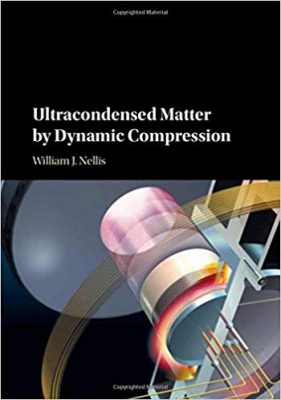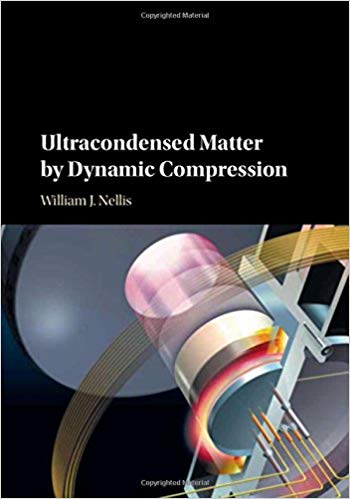 Author: William J. Nellis
Author: William J. Nellis
Publisher: Cambridge University Press – 158 pages
Book Review by: Sonu Chandiram
This short book of just under 160 pages is about dynamic compression, a field of science that is only about 150 years old. In 1870, W.J. Rankine published a paper on conservation equations relating to momentum, mass, and energy. It was published in Philosophical Transactions of the Royal Society of London.
Another scientist contributed to the development of this field. He was H. Hugoniot who derived Rankine’s equations on conservation on a more general basis in the 1880s. About four decades later in the 1920s, the science of quantum mechanics developed.
But were it not for the threat of World War II in the 1930s, dynamic compression would probably have been forgotten. In the 1940s, two other scientists – Hans Bethe and Edward Teller – first wrote about the treatment of thermal equilibrium.
Substantial interest was generated in the United States and in the Soviet Union about dynamic compression, shock compression, and shock wave propagation in the 1940s. Government funding for experiments was approved in these two countries, and facilities were built.
The author writes: “A major emphasis of that period was development of fast experimental techniques to measure pressure-volume data under shock compression using the Rankine-Hugoniot shock wave compression equations.”
This book consists of 10 short chapters that we list below to provide you and overview of the scientific origins and basis of dynamic compression:
- Introduction
- Basics of Dynamic Compression
- Generation of Dynamic Pressures
- Brief History of High-Pressure Research: 1643 to 1968
- Rare Gas Fluids
- Metallization of Fluid Hydrogen at 140 GPa
- Unusual Magnetic Fields of Uranus and Neptune: Metallic Fluid H
- Shock-Induced Opacity in Transparent Crystals
- Metastable Solid Metallic Hydrogen
- Warm Dense Matter at Shock Pressures up to 20 TPa (200 Mbar)
Experiments continued in the 1950s, but not much happened for many decades after that, the author William J. Nellis points out. He writes: “in subsequent years, dynamic compression experiments were performed primarily in defense laboratories and in a few universities and campuses. As a result, few textbooks have been written on dynamic compression, although several have been written on shock compression.
Because of this, researchers have often had to learn about dynamic compression from a relatively few published papers and a few unpublished reports. Thus research in dynamic compression had become essentially isolated from the scientific community.”
He concludes: “So I have written this book to be of general interest to undergraduate and graduate students, for professors that teach them and for research scientists at national laboratories and in industry who need to know it.”
This is then a pioneering and one-of-a-kind contribution on dynamic and shock compression by the author, who thought that it was very important to share his knowledge with the world.
Author:
William J. Nellis is an Associate of the Department of Physics at Harvard University, a Fellow of the American Physical Society, Division of Condensed Matter Physics, and holder of the APS Duvall Award for Shock Compression Science, former Chair of the APS Topical Group on Shock Compression of Condensed Matter.
He is a former President of the International Association of High Pressure Science and Technology, and a holder of the Bridgeman Award. He has performed extensive dynamic compression research at Lawrence Livermore Laboratory and published more than 250 papers in various scientific journals.







